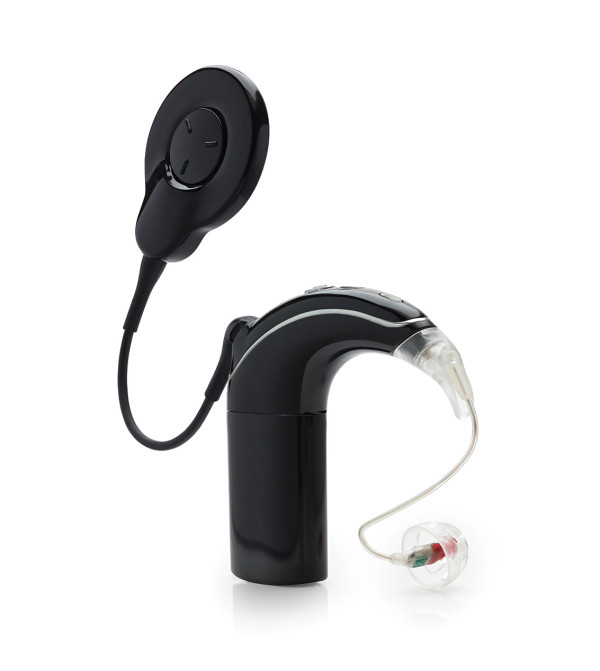Electroacoustic Implants

What is an electroacoustic implant?
An electroacoustic (hybrid) implant may be suitable if you have a mid-high frequency hearing loss with good preservation of low frequency natural hearing. In this situation, hearing preservation surgery provides the opportunity for you to enjoy the best of both worlds.
An electroacoustic implant combines conventional acoustic amplification with electrical stimulation to provide a high quality, more natural sound. While the acoustic component of the device amplifies low frequency natural hearing, the cochlear implant provides access to mid-high frequency sound via electrical stimulation.
An electroacoustic implant system has two parts:
- The implant, which is placed beneath the skin at the time of surgery. The electrode array of the cochlear implant is gently inserted into the cochlear (inner ear) to increase the likelihood of low frequency hearing preservation.
- The hybrid sound processor, which includes an in the ear hearing aid component to stimulate your low frequency natural hearing and a behind the ear processing unit for high frequency electrical stimulation.
How does it work?
Is it right for you?
An electroacoustic implant may be of benefit if you have a steeply sloping, mid-high frequency sensorineural (inner ear) hearing loss with good preservation of low frequency hearing and you gain limited speech understanding from conventional hearing aids.
If you suffer from a significant high frequency hearing loss, it is very difficult for hearing aids alone to provide you with good access to these sounds. The electrode array of the cochlear implant will allow you to hear high frequency sounds better. These sounds are particularly important for speech understanding and successful communication. Combining high frequency information with your natural low frequency hearing, aided by the acoustic component of the device, will optimise your hearing experience.
What can you expect?
Many people with an electroacoustic implant are able to hear high frequency sounds more easily, understand speech better and enjoy:
- Improved awareness of high frequency environmental sound (e.g. alarms, sirens, doorbells, telephone ringing, birds singing)
- Improved ease of listening
- Improved confidence in conversation
- Improved listening in social situations and in the workplace
- Improved hearing over distance
To find out more about how SACIC can help
you,
contact us or request an appointment.
